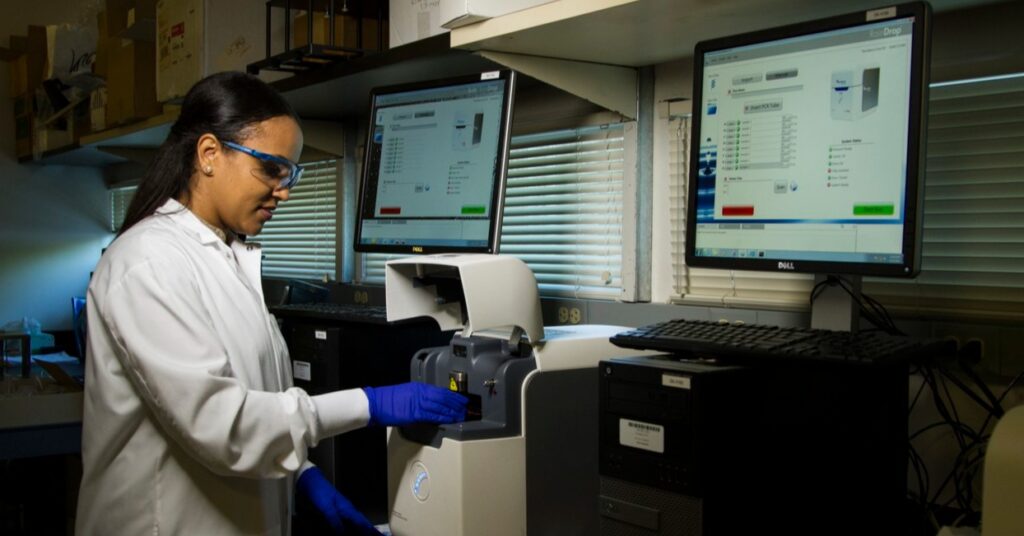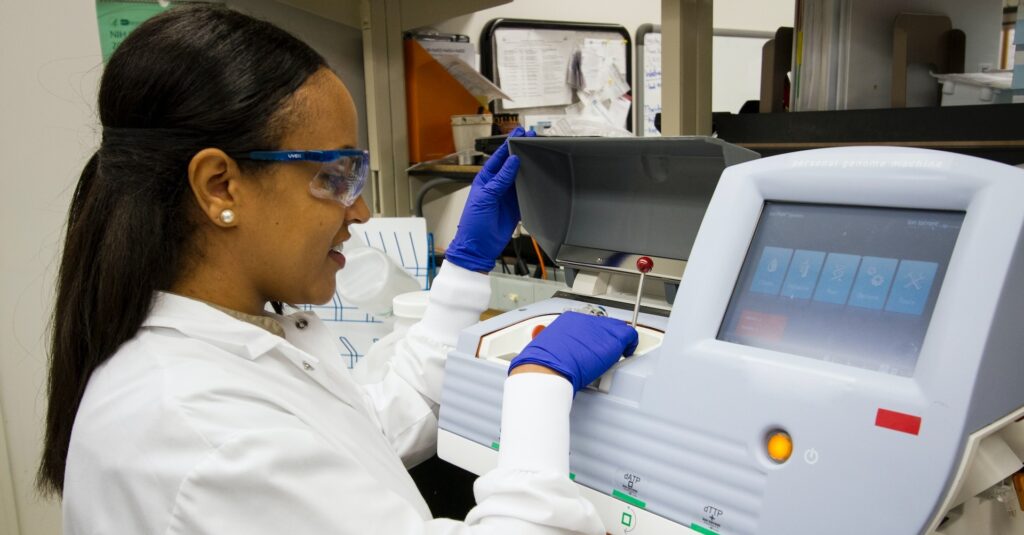
What Is the Epidemiological Triangle?
The epidemiological triad or triangle is an organized methodology used [...]

For most people, the term ‘medical care’ evokes mental images of doctors, nurses, and dentists. These healthcare professionals certainly provide essential primary care services, but they hardly constitute the entirety of the healthcare field. For example, they don’t include audiologists, dental hygienists, diagnostic sonographers, kinesiotherapists, marriage counselors, physician assistants, radiologic assistants, respiratory therapists, or speech pathologists.
And that’s just the tip of the iceberg. As many as 60 percent of US healthcare workers diagnose, evaluate, and treat injuries and diseases, even though they aren’t doctors or nurses. These practitioners fall under the umbrella term ‘allied health.’
So, what is allied health? We address that question in this article by discussing:
Allied health encompasses fields of medicine that involve the application of scientific principles and evidence-based practice to the treatment of patients suffering various conditions and ailments. Allied health professionals are highly trained, usually hold licenses or certifications, and frequently focus on wellness and preventative medicine in addition to addressing crises. What they are not, however, are doctors, nurses, or dentists.
The term allied health originated in the 1960s, partly as the result of federal action. In 1966, the federal government enacted legislation to provide education funding in medicine, pharmacy, podiatry, optometry, osteopathy, and veterinary medicine. It then passed a separate law, entitled the Allied Health Professions Training Act of 1966, to ensure adequate funding for the education of health providers not covered by the first law. These practitioners were deemed “allied” to the initial grouping of medical professionals; hence, “allied health.”
At roughly the same time, the Association of Schools Advancing Health Professions emerged. ASAHP promotes education, inter-professional collaboration, best practices, and innovation in allied health practice.
According to ASAHP, allied health professionals engage in the “diagnostic evaluation and treatment of acute and chronic diseases and disorders; provision of dietary and nutrition services; rehabilitation services; and the management and operation of health systems.” Allied health serves everyone from individuals and families to communities and institutions.
The Federal Code defines allied health professionals as those patient-care professionals who have not received any of the following degrees:
The Affordable Care Act (ACA) defines allied health professionals as someone who:
ASAHP includes the following in its list of allied health professions:
Careers in allied health offer entry points at multiple academic plateaus. You can complete a two-year associate’s degree training program and become a:
Undergraduate institutions offer multiple bachelor’s degrees in allied health sciences, including:
Many allied healthcare careers, including—unsurprisingly—those that pay highest require a graduate degree and, often, licensure or certification from the state and/or a professional governing board. You must earn a doctor of physical therapy degree from a Commission on Accreditation in Physical Therapy Education-accredited program to become a physical therapist, for example. You need a master’s in occupational therapy to become an occupational therapist (although the profession’s governing board is considering requiring a doctorate in the future).
Allied health graduate programs have started appearing online with increasing frequency in recent years. The Master in Healthcare Administration was among the earliest program types to commit to online learning. Many schools have more recently introduced online physician assistant programs.
Of course, many healthcare degree programs include required internships, field placements, or rotational work, but schools are developing ways to manage this challenge. Some offer hybrid programs in which most content is delivered online but also require students to participate in some in-person on-campus learning. Others have expanded their career offices to assist in finding remote placements for distance learners.
If you’re a college freshman or a community college student thinking about a career in allied health, it’s hard to go wrong with a health sciences major. You’ll study across the spectrum of healthcare services, learning what piques your interest. Let your curiosity drive you and you will find your way to the graduate program and career that suits your interests and skills.
Questions or feedback? Email editor@noodle.com

The epidemiological triad or triangle is an organized methodology used [...]

A family nurse practitioner (FNP) provides comprehensive primary health care [...]

FNPs practice in a broad range of health care settings. [...]

Some epidemiologists assist pharmaceutical companies in developing safer medicines. Some [...]

A Bachelor of Science in Nursing (BSN) is a four-year [...]
Categorized as: Health Informatics & Sciences, Occupational & Behavioral Therapy, Nursing & Healthcare